Join fine art photographer Keith Dotson as he photographs abandoned buildings along old Route 66 in Texola, Oklahoma — with behind-the-scenes video
There are two sides to the legendary old Route 66. There is the celebrated and nostalgic side, with restored gas stations and classic motels where tourists can shop, dine, and take photographs. This is the Disney Pixar Cars aspect of Route 66.
The other version of Route 66 is lonelier and less profitable. It’s the many abandoned stretches of Route 66, where once-prosperous main streets have all but vanished, leaving only collapsing and abandoned shells. These are the ghost towns of old Route 66. These are the quiet, isolated, somewhat spooky places I like to photograph.
Be sure to read about my other abandoned Route 66 destination, which sits on the Texas / New Mexico state line
Texola, Oklahoma, population 35
I recently completed a major road trip to New Mexico, where I made photographs of landscapes, historic sites, and abandoned buildings. Along the way, I also took advantage of fascinating stops along the way. One of those stops was the almost ghost town at Texola, Oklahoma.
There’s a little, one-room jail in town that’s worth visiting — their one tourist attraction in town. And, there’s one structure listed on the National Register of Historic Places. It’s the Magnolia Service Station, situated on the intersection of Grand Avenue and Broadway, where Route 66 splits into two directions. Unfortunately, the Magnolia is in very poor condition, and probably won’t stand much longer without intervention.
I arrived in Texola at midday after a full morning of driving, and as you’ll see in the video, the light was brutally direct and unfiltered.
Video: Exploring the (Almost) Ghost Town at Texola, Oklahoma
History of Texola, Oklahoma
Texola grew up along the Choctaw, Oklahoma, and Gulf Railroad line, which was constructed through the area in 1902 and subsequent years.
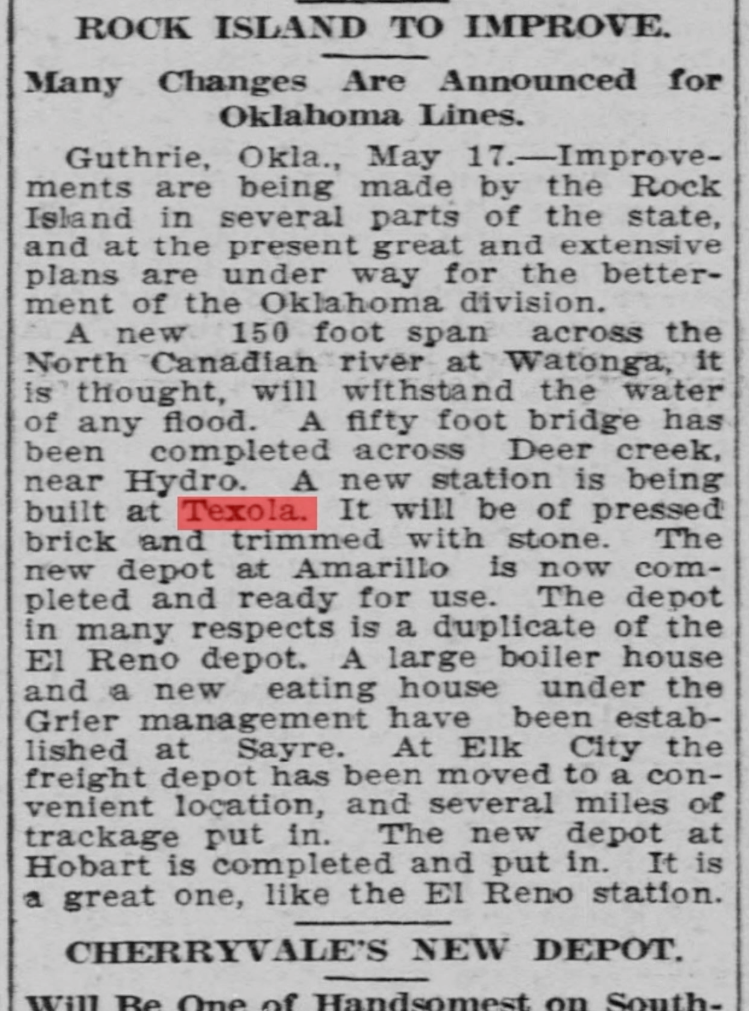
Before being named Texola, the town was called Texokla and Texoma. A man named Reuben H. Grimes served as the first postmaster when a post office was established on December 12, 1901. Keep in mind that Oklahoma didn’t get statehood until Nov 16, 1907.
Texola grew as a farming community and eventually supported two cotton gins and a gristmill.
As we can see on the historic maps, which predate Route 66, Texola had banks, several general stores, a hardware store, a meat market, a blacksmith shop, farm supply and implement dealers, barber shops, a theater, restaurants, a lumber yard, and more.
One source claimed the town had a ten-acre park and an auditorium with adequate seating to accommodate 300 people.
The Texola Herald newspaper was published weekly from 1902 at least until the early 1920s.
There were numerous churches including Baptist, Methodist, and Presbyterian denominations.
Travelers on Route 66 had their choice of several gas stations, three hotels, and a few restaurants, including the Friendly Cafe, which still stands today in ruins, but can be seen in its heyday in this historic postcard. There’s still a sticker on the front door of the Friendly Cafe building for BankAmericard. Do you remember those? They were in use from 1958 until 1976, when they became Visa. That clue tells the building was still in operation in the late 1950s at least, but whether it was still a cafe is any.
The population peaked at 581 people in 1930, and began declining in the 1930s, probably as a result of the Great Depression and the dustbowl, when a lot of Okies immigrated west to California.
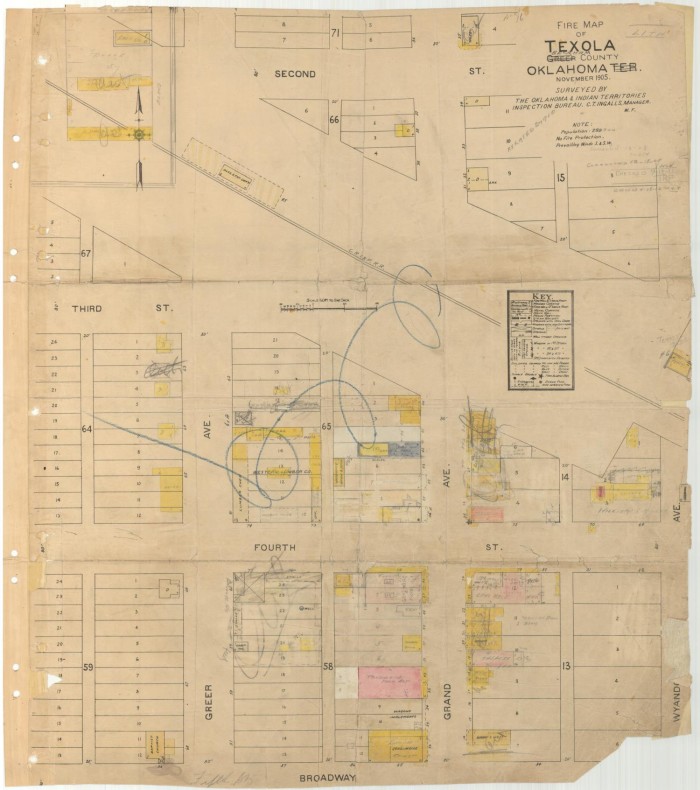
Texola bank cashier staged a fake bank robbery in 1908
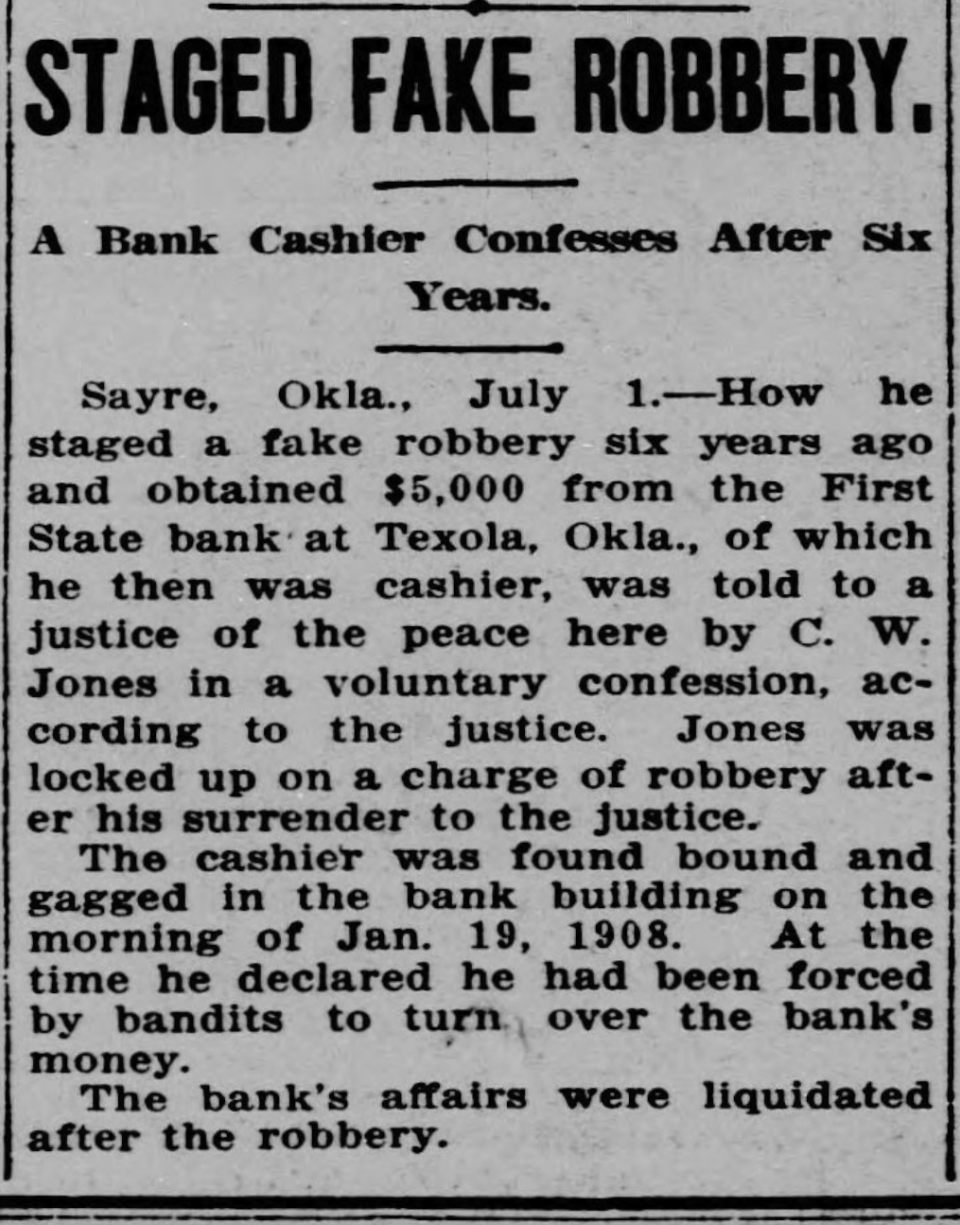
“Staged Fake Robbery,” reads the headline. It goes on to say, “A bank cashier confesses after 6 years.”
It goes on to explain how a man named C.W. Jones had confessed to a 1908 scheme, where he stole $5,000 from the bank in Texola where he worked as a cashier, and then bound and gagged himself to make it appear as though he was a victim in a bank robbery. How do you convincingly gag and tie yourself? No word on accomplices in this short story. The article says goes on to say the robbery resulted in the liquidation of the bank.
Black and white photographs shot along old Route 66 in Texola
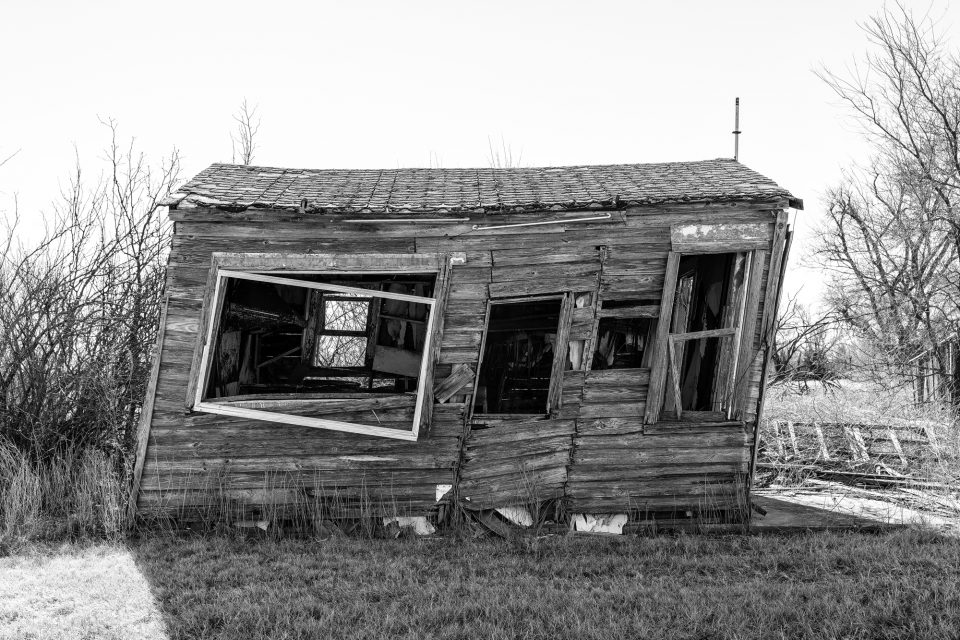

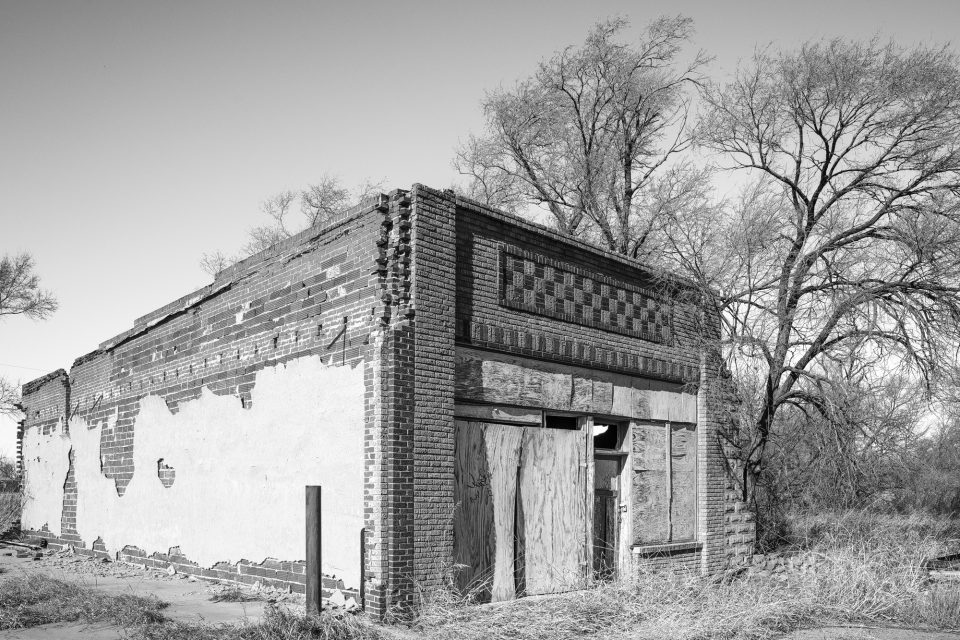
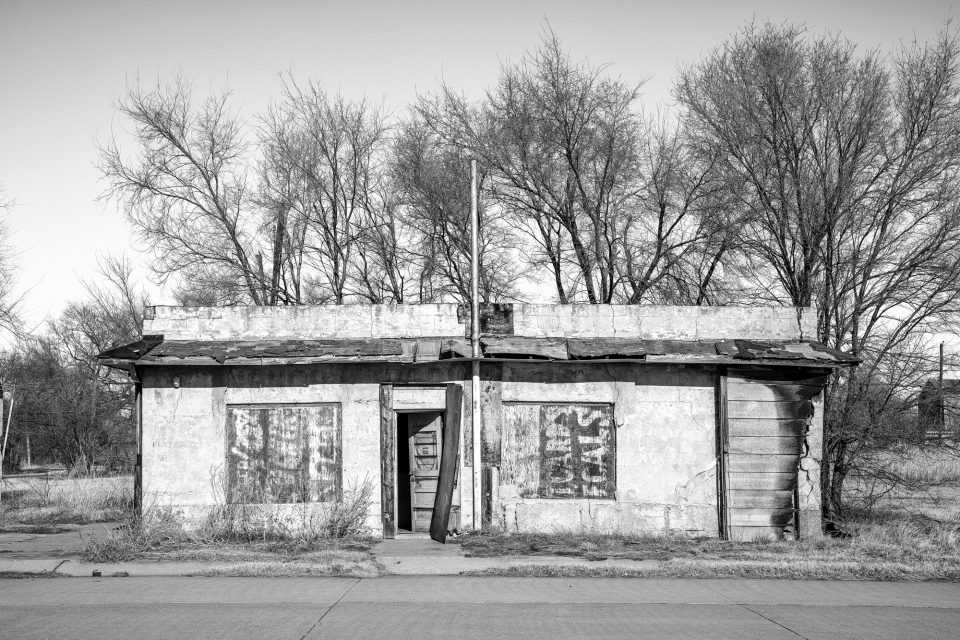
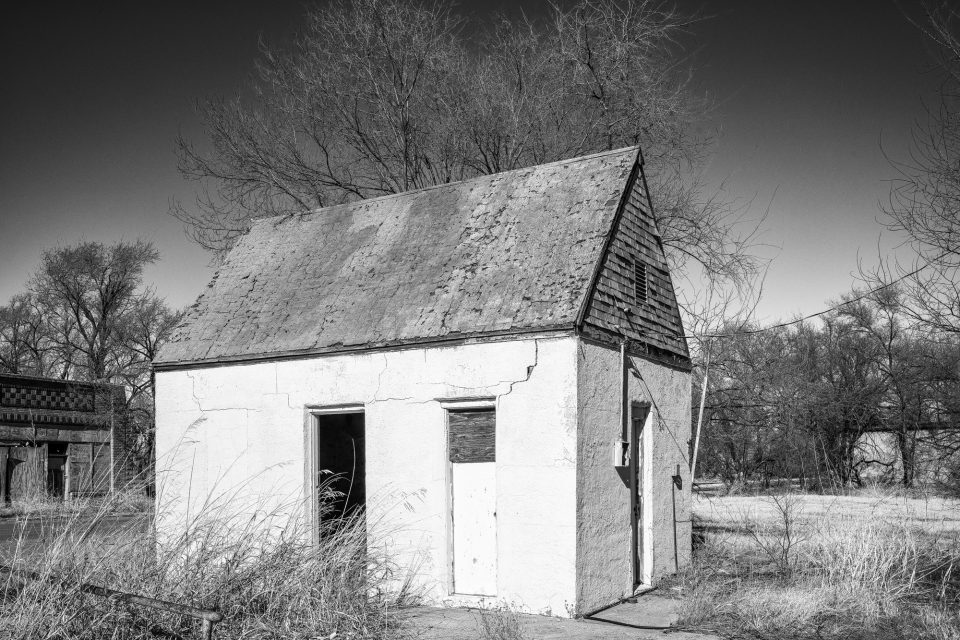

Sources and Links
66postcards.com. Oklahoma Postcards and Photos. (Link)
Library of Congress. The Topeka State Journal (Topeka, Kan.), May 17, 1909, (LAST EDITION). (Link)
The Gateway to Oklahoma History. Oklahoma Historical Society. Texola, 1905 (map) (Link)
The Gateway to Oklahoma History. Oklahoma Historical Society. The Texola Herald (Texola, Okla.), Vol. 5, No. 51, Ed. 1 Friday, March 15, 1907. (Link)
Note: This blog post contains Amazon Affiliate links. I may earn a small commission on qualifying purchases.
